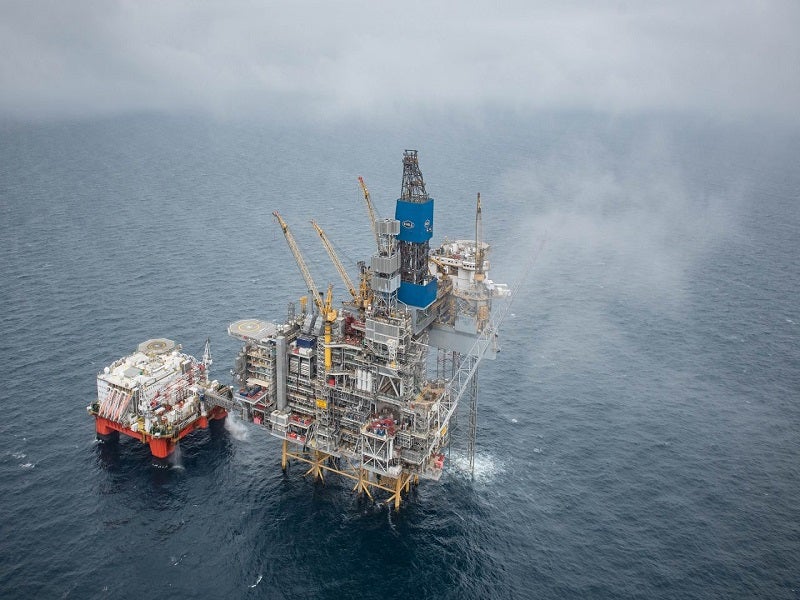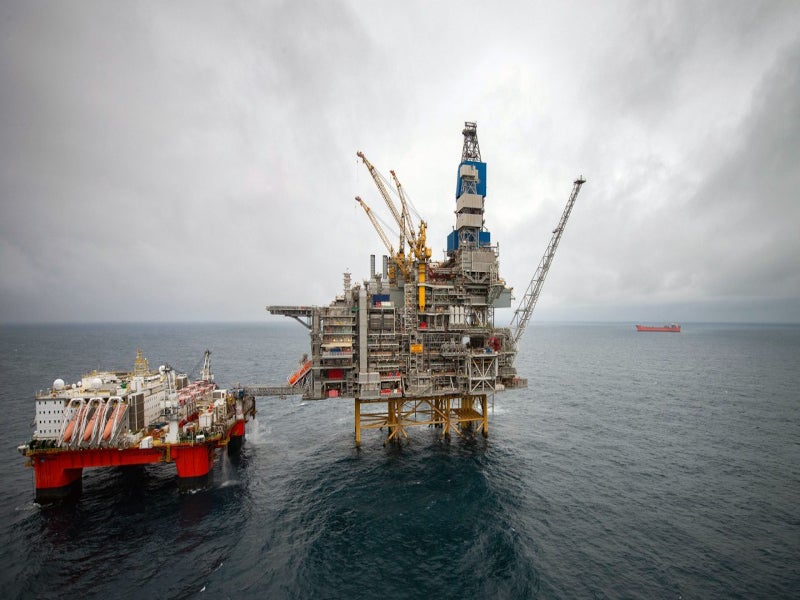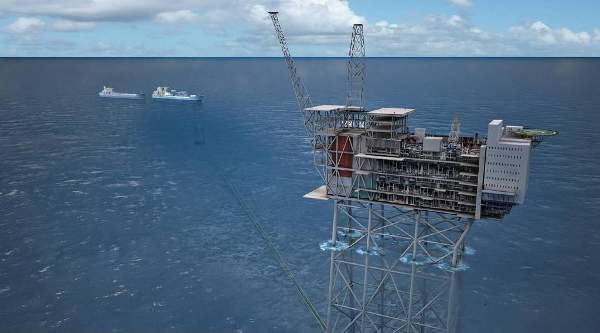Equinor’s Mariner Area project comprises the development of the Mariner and the Mariner East ultra-heavy oil fields on the UK Continental Shelf (UKCS) in the northern North Sea.
The project lies at water depths ranging between 97m and 112m. It is located approximately 130km off the British coast and 40km north-west from the UK / Norway international boundary.
The Mariner field is in block 9/11A while Mariner East is located 5km to the south-east in block 9/11B on the UKCS.
Norwegian state-owned energy group Equinor operates the Mariner Area with a 65.11% stake while the remaining interests are held by JX Nippon (20%), Siccar Point (8.89%), and ONE-Dyas (6%).
Developed with a gross investment of more than $7.7bn, Mariner is Equinor’s first operated offshore development in the UK North Sea that came on stream in August 2019. The oil field is expected to remain operational for 30 years.
Mariner Area Development project timeline
The development concept for the Mariner fields was revealed in September 2011. An environmental statement (ES) for the project was completed and submitted for approval to the UK Department of Energy and Climate Change (DECC) in May 2012. The final investment decision (FID) was announced in December 2012. The approval for the development of the oil field was announced in February 2013.
Initial activities on the project started in 2016, upon receiving the clearance for development and operation. Offshore installation of the platform jacket was carried out in 2015 and the topside installation was completed in mid-2017.
Discovery and reservoir details of the Mariner field
The now-defunct Union Oil Company of California (Unocal) revealed the discovery of the Mariner field in 1981. The four wells it drilled in the location produced heavy oil. The field was later re-valued by a multi-well appraisal programme in 1996-1997 by Texaco.
The Mariner and Mariner East oil fields are made up of two shallow reservoirs. The reservoirs are estimated to hold up to three billion barrels of oil in place.
One reservoir in the Maureen Formation lies at depths ranging between 1,400m and 1,500m below sea level and contains oil with API gravity of 14.2.
The second reservoir is in the Heimdal Formation. It is situated at 1,200m below sea level and contains oil characterised by API gravity 12.1.
At the time of production start-up, the Mariner field was estimated to have total recoverable reserves of 300 million barrels. The reserves estimate was later reduced to 275 million barrels, which was again revised to 180 million barrels in January 2022.
Production from the Mariner field
The project has an annual average plateau production capacity of 55,000 barrels of crude oil a day. The combined oil and diluent, however, is expected to flow at the rate of 80,000 barrels a day.
Drilling the ultra-heavy oil fields
The Mariner offshore field development includes 50 wells and 92 side tracks while fluids from the nearby Mariner East field are tapped by four wells. The production drilling was started in 2016.
All the wells will be tied-back to the Mariner A production, drilling and quarters (PDQ) unit secured on a fixed steel jacket platform. The PDQ unit, in turn, is tied-back to Mariner B floating storage and offloading unit (FSU).
The wells at the Mariner field are drilled by the PDQ platform and a jack-up drilling rig while the Mariner East wells were drilled by a semi-submersible drilling rig.
The platform first separates gas and water from the produced oil. The stabilised oil is then piped to the FSU vessel for storage. From there, it is shipped to the shore through shuttle tankers.
The water is re-injected into the reservoirs to maintain pressure. The gas is used as fuel to meet the energy demand of the turbines onboard the platform.
Pipelines and subsea infrastructure
A 33km-long pipeline was laid between the platform and the Vesterled pipeline. This 6in gas import pipeline supplies the additional gas that is needed to meet the energy demands of the platform. Diluent to the platform is supplied from the FSU through a separate 6in diluent import pipeline measuring 2.4km in length.
A 2.6km pipeline, with a 10in diameter, was installed to export the stabilised crude oil from the PDQ to the FSU.
A 6.5km umbilical and an export pipeline of the same length connect the production template at the Mariner East to the PDQ.
All the pipelines are connected to their respective structures by pipeline end terminations (PLETs) and spools.
The 73km-long fibre-optic communication cable runs from the Heimdal platform, which is located on block 25/4 of the Norwegian North Sea, to the Mariner platform.
Contracts involved in Mariner Area project
The FSU was built by Samsung Heavy Industries in South Korea. Wärtsilä supplied pumping solutions for the FSU.
The front-end engineering and design (FEED) of the PDQ’s topsides was carried out by Aker Solutions as part of a $39m contract awarded in late-June 2011. SNC-Lavalin was contracted in November 2011 for the FEED of the platform’s jacket.
The heavy-lift operations for the project was carried out by Saipem.
The engineering, procurement, and construction (EPC) contract for the steel jacket was awarded to Dragados Offshore, which worked in collaboration with SNC Lavalin. The contract for the platform’s topside was awarded to Daewoo Shipbuilding & Marine Engineering (DSME). CB&I and Rig Design Services (RDS) assisted DSME.
Odfjell Drilling was engaged to provide drilling services for the project, under a contract worth £160m ($245m) awarded in April 2013.
Subsea 7 was awarded a $170m engineering, procurement, installation, and construction (EPIC) contract for 24 miles (38.6km) of rigid flowlines and flexible riser systems, and associated infrastructure and equipment.
In May 2013, UK-based offshore drilling contractor Noble received a four-year contract worth $655m to provide drilling services.
Aker Solutions was contracted in June 2014 to provide field maintenance and modification services. The five-year contract included options for a four-year extension and required Aker to provide these services during the pre-operations phase and the hook-up and commissioning phase.
Schlumberger was awarded a contract to deliver the drilling and well services for the Mariner field.
Wood secured a three-year contract worth $75m from Equinor, to provide the operations, maintenance, modifications, and offshore services on the Mariner A platform and Mariner B FSU, in October 2020.










